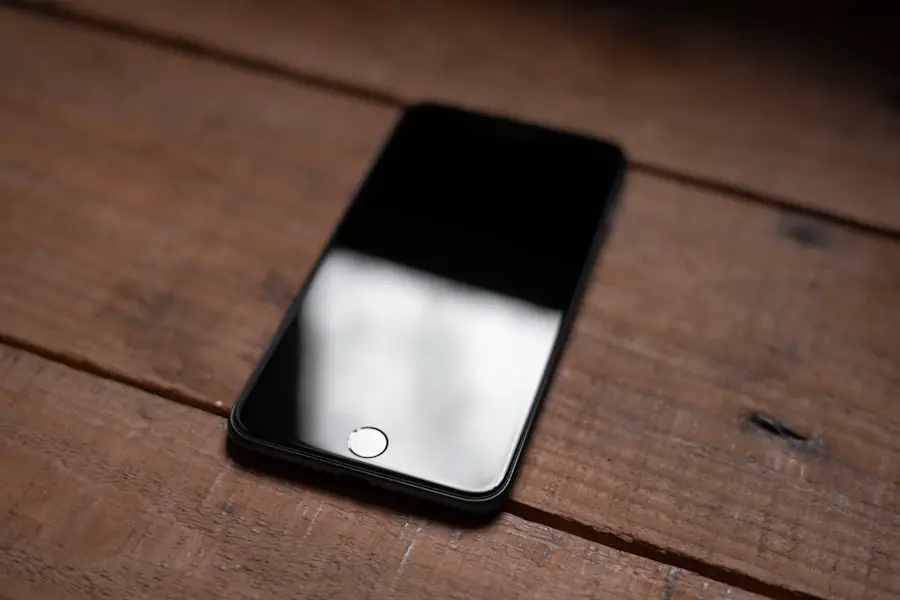Location Services on the iPhone represent a sophisticated technology that utilizes a combination of GPS, Wi-Fi, Bluetooth, and cellular data to determine the device’s geographical position. This feature is integral to a multitude of applications, ranging from navigation tools like Apple Maps to social media platforms that allow users to tag their locations. The ability to pinpoint one’s location has transformed how we interact with our devices, enabling functionalities such as location-based reminders, geotagging photos, and finding nearby restaurants or services.
The underlying technology of Location Services is complex yet user-friendly. When enabled, the iPhone continuously gathers data from various sources to provide accurate location information. For instance, GPS satellites provide precise coordinates, while Wi-Fi networks can help triangulate a position in urban areas where GPS signals may be weak.
This amalgamation of data sources allows for a seamless user experience, but it also raises questions about privacy and data security. As users become increasingly aware of how their data is being utilized, the need to understand and manage Location Services becomes paramount.
Key Takeaways
- iPhone location services allow the device to track and use the user’s location for various apps and system services.
- Disabling iPhone location services can help protect privacy, conserve battery life, and reduce data usage.
- To disable location services on iPhone, go to Settings, Privacy, and Location Services, then toggle off the switch.
- Users can also choose to disable location services for specific apps by going to Settings, Privacy, and Location Services, then selecting the app and choosing “Never” for location access.
- Managing location services for system services can be done by going to Settings, Privacy, and Location Services, then scrolling down to System Services and toggling off unnecessary services.
Why Disable iPhone Location Services?
There are several compelling reasons why an iPhone user might choose to disable Location Services. One of the most significant concerns is privacy. When Location Services are active, apps can track a user’s movements and collect data about their whereabouts.
This information can be shared with third parties, leading to potential misuse or unauthorized access. For individuals who prioritize their privacy, disabling these services can provide peace of mind, ensuring that their location data is not being monitored or exploited. Another reason to consider disabling Location Services is to conserve battery life.
The continuous use of GPS and other location-tracking technologies can drain the iPhone’s battery more quickly than usual. For users who rely heavily on their devices throughout the day, turning off Location Services can extend battery life significantly. This is particularly beneficial for those who may not need location tracking for their daily activities or who are in situations where charging options are limited.
How to Disable Location Services on iPhone

Disabling Location Services on an iPhone is a straightforward process that can be accomplished in just a few steps. First, users should navigate to the “Settings” app on their device. Once in Settings, they will find the “Privacy & Security” option, which houses all privacy-related settings, including Location Services.
Tapping on “Location Services” will lead to a screen that displays the current status of the feature and a list of all apps that have requested access to location data. To disable Location Services entirely, users simply need to toggle the switch at the top of the screen from green (enabled) to gray (disabled). This action will prevent all apps from accessing location data until the feature is re-enabled.
However, it’s important to note that some system functions may also be affected by this change, which leads to a less personalized experience on the device.
Disabling Location Services for Specific Apps
| App Name | Location Services Disabled | Last Accessed |
|---|---|---|
| Yes | 2 days ago | |
| No | 1 hour ago | |
| Yes | 3 days ago |
For those who wish to maintain some level of location tracking while still protecting their privacy, disabling Location Services for specific apps is an excellent compromise. After accessing the “Location Services” menu in the Settings app, users will see a comprehensive list of all installed applications that have requested access to location data. Each app will have its own settings that allow users to choose how they want to share their location.
Users can select an app and choose from several options: “Never,” “Ask Next Time,” “While Using the App,” or “Always.” For instance, a navigation app like Google Maps may require access “While Using the App” to provide real-time directions effectively. Conversely, social media apps may not need constant access and can be set to “Never” or “Ask Next Time.” This granular control allows users to tailor their privacy settings according to their preferences and needs without completely disabling Location Services.
Managing Location Services for System Services
In addition to third-party applications, iPhones also utilize Location Services for various system functions that enhance user experience. These system services include features like Find My iPhone, emergency calls, and location-based alerts. Managing these settings is crucial for users who want to strike a balance between functionality and privacy.
To access these system services, users can scroll down within the “Location Services” menu and tap on “System Services.” Here, they will find a list of services that utilize location data, such as “Cell Network Search,” “Compass Calibration,” and “Location-Based Alerts.” Users can toggle these services on or off based on their preferences. For example, if someone frequently uses Find My iPhone but is concerned about other services tracking their location, they can selectively disable those specific features while keeping Find My iPhone active.
The Impact of Disabling Location Services on iPhone

Impact on Navigation and Travel
One of the immediate effects of disabling Location Services is the loss of personalized experiences that rely on location data. For instance, navigation apps will not be able to provide real-time directions or traffic updates, which can hinder travel efficiency.
Effects on Weather and Convenience Features
Similarly, weather apps may not deliver localized forecasts without knowing the user’s current location.
Moreover, certain features that enhance convenience may become less effective or entirely unusable. For example, location-based reminders that alert users when they arrive at or leave a specific place will no longer function if Location Services are disabled.Discovering Local Events and Promotions
Users may also miss out on discovering nearby events or promotions tailored to their geographical area. While disabling these services can enhance privacy and battery life, it is essential for users to weigh these benefits against the potential loss of functionality in their daily digital interactions.
Alternatives to Disabling Location Services
For those who are hesitant about completely disabling Location Services but still want to protect their privacy, there are several alternatives worth considering. One option is to use a Virtual Private Network (VPN) that masks the user’s IP address and encrypts internet traffic. While this does not directly affect GPS tracking, it adds an additional layer of security when using apps that may request location data.
Another alternative is to regularly review and manage app permissions.
Users can periodically check which apps have access to their location data and adjust permissions as needed. This proactive approach allows individuals to maintain control over their privacy without sacrificing the benefits of location-based services entirely.Additionally, users can take advantage of features like “Significant Locations,” which allows Apple to learn places that are significant to them without sharing this information with third-party apps.
Conclusion and Final Thoughts
The decision to disable Location Services on an iPhone involves careful consideration of privacy concerns versus the convenience offered by location-based functionalities. While disabling these services can enhance user privacy and extend battery life, it also comes with trade-offs in terms of app performance and personalized experiences. By understanding how Location Services work and exploring options for managing them effectively, users can make informed choices that align with their individual needs and preferences.
Ultimately, whether one chooses to disable Location Services entirely or selectively manage them for specific applications and system functions depends on personal priorities regarding privacy and functionality. As technology continues to evolve and awareness around data security grows, users must remain vigilant in understanding how their devices operate and how they can protect their information while still enjoying the benefits of modern technology.
If you are looking for more information on how to protect your privacy on your iPhone, you may want to check out the privacy policy on getiphoneinfo.com. This website also provides valuable insights and tips on various iPhone-related topics, including how to turn off location services without notifying anyone. By visiting their about page here, you can learn more about the authors and experts behind the content, ensuring you are getting reliable and trustworthy information.
FAQs
What is location services on iPhone?
Location services on iPhone is a feature that allows apps and websites to use your location to provide you with personalized content and services.
Why would someone want to turn off location on iPhone without notifying?
Some people may want to turn off location on their iPhone without notifying because they value their privacy and do not want certain apps or individuals to know their exact location at all times.
How can I turn off location on iPhone without notifying?
To turn off location on iPhone without notifying, you can go to Settings, then Privacy, then Location Services, and then toggle off the switch for “Share My Location.”
Will the iPhone user be notified if I turn off location sharing for their device?
No, the iPhone user will not be notified if you turn off location sharing for their device. This action is done discreetly and does not send any notifications to the user.
Are there any potential consequences of turning off location on iPhone without notifying?
One potential consequence of turning off location on iPhone without notifying is that certain apps or services may not function properly if they rely on your location to provide you with relevant information or features.










